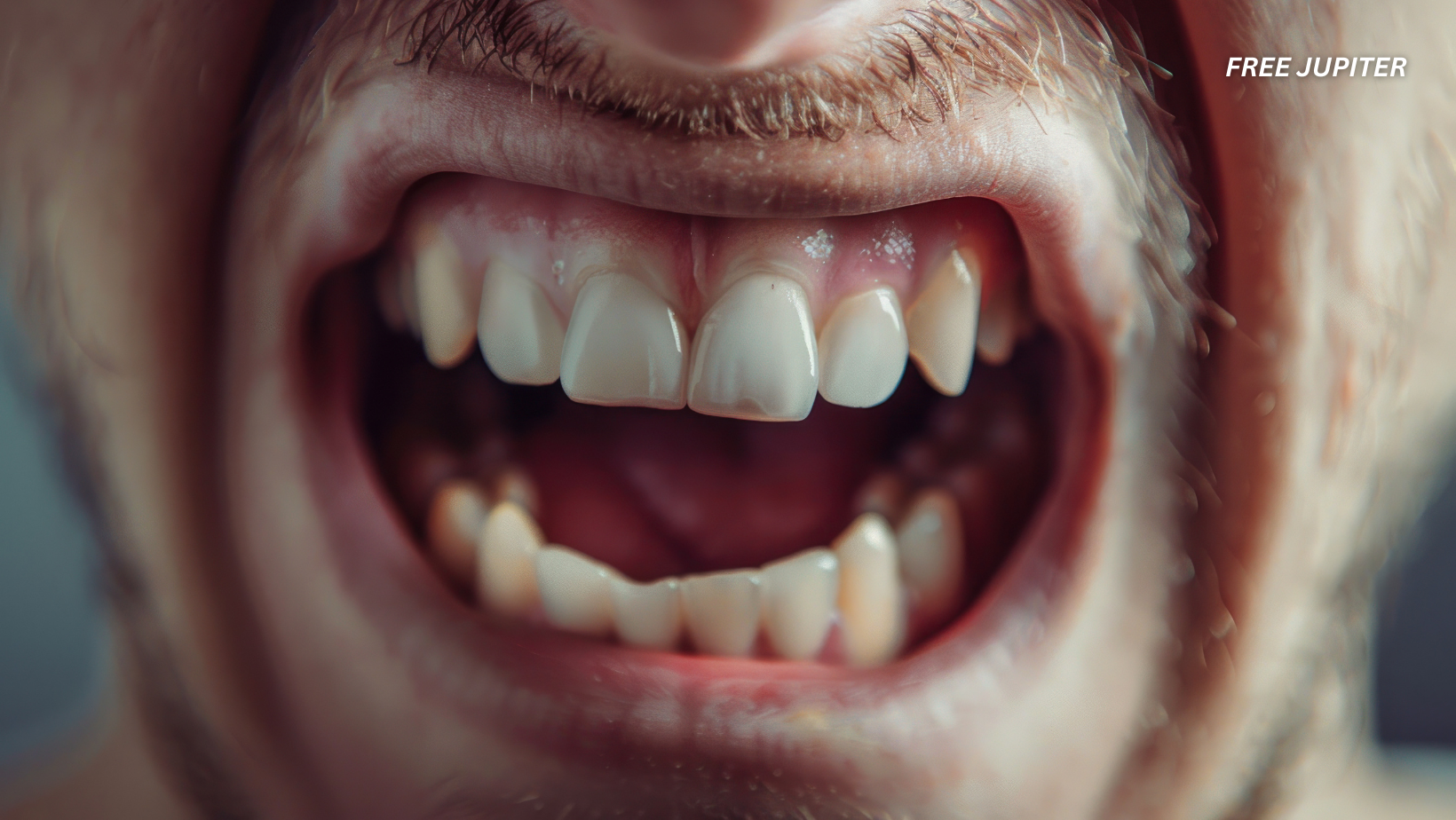Plaque is one of those sneaky, everyday villains that most people don’t think about until it causes problems. It starts off as a thin film on your teeth, but left unchecked, it can spiral into cavities, bad breath, and even gum disease. The root cause is simple: bacteria love the warm, sugary environment inside the human mouth. Once they settle in, they form sticky colonies on enamel, eating away at the protective surface of teeth.
Dentists have long recommended brushing twice daily, flossing regularly, and visiting the clinic for cleanings. While these habits certainly help, they don’t always prevent plaque buildup entirely. But now, researchers believe they’ve stumbled upon a natural solution hidden in our very diets—one that could make oral care significantly more effective.
The Secret Weapon Hidden in Vegetables
The compound making headlines is called 3,3′-Diindolylmethane, better known by its more manageable nickname, DIM. Despite its complicated name, DIM comes from an ordinary source: cruciferous vegetables such as broccoli, Brussels sprouts, and kale.
A team of scientists from Ben-Gurion University of the Negev in Israel, working in partnership with colleagues from China and Singapore, found that DIM may be a game-changer for oral health. Their research revealed that this naturally occurring molecule disrupts Streptococcus mutans, the bacteria most responsible for tooth decay.
This bacterium is infamous in dentistry. It thrives on sugar, produces acid as a byproduct, and clings tightly to tooth surfaces, forming what are known as biofilms—the technical term for plaque. Once established, these biofilms become difficult to remove, acting like a shield that protects bacteria while they quietly erode enamel.
How DIM Weakens Plaque’s Stronghold
In lab tests, scientists discovered that DIM reduced these stubborn biofilms by a remarkable 90%. That means plaque had far less chance of sticking to teeth in the first place.
But what makes DIM even more promising is the way it works:
- It stops bacteria from multiplying – Without the ability to reproduce rapidly, Streptococcus mutans loses its competitive edge in the mouth.
- It blocks bacteria from sticking to teeth – Even if bacteria are present, DIM makes it harder for them to latch onto enamel, reducing the formation of sticky plaque.
- It does so with low toxicity – Unlike some antimicrobial chemicals that may irritate or disrupt the natural balance of the mouth, DIM is considered safe and gentle.
This combination could make DIM an ideal addition to toothpaste, mouthwash, or other oral hygiene products in the future.
Read more: What People Say They Saw “On the Other Side” After Dying And Coming Back To Life
More Than Just a Dental Ally
DIM is not entirely new to science. Researchers have been studying it for years, mainly because of its anti-carcinogenic properties. Studies suggest that DIM may help reduce the risk of certain cancers by regulating estrogen activity in the body and encouraging the breakdown of harmful compounds.
Its reputation as a multitasking molecule makes it an especially attractive candidate for consumer health products. Imagine brushing your teeth with a toothpaste that not only keeps cavities away but also introduces a compound with broader health benefits.
Related Studies: Other Natural Compounds in Oral Health
DIM is not the only natural molecule that has caught the attention of researchers. Scientists have been exploring a wide range of plant-based and dietary compounds that could improve oral health:
- Green Tea Extract (EGCG): Epigallocatechin gallate, a powerful antioxidant found in green tea, has been shown to reduce bacterial growth in the mouth and may even help fight gum disease.
- Cranberry Compounds: Cranberries contain proanthocyanidins, which prevent bacteria from sticking to surfaces. While they are often discussed in relation to urinary tract health, their potential for oral care is gaining attention.
- Probiotics: Some studies suggest that introducing “good” bacteria into the mouth could crowd out harmful species like Streptococcus mutans, helping restore balance to the oral microbiome.
- Licorice Root: Research has indicated that compounds in licorice may inhibit cavity-causing bacteria and could be used in lozenges or oral rinses.
By comparing DIM to these other natural candidates, scientists are beginning to see how nature itself may hold the solutions to some of dentistry’s oldest challenges.
Read more: Synthetic Dyes Are Out: Skittles, M&M’s, and More Go Natural by 2026
Why Fighting Biofilms Matters
One of the most frustrating features of dental plaque is its biofilm structure. Unlike free-floating bacteria, which can be easily rinsed away, biofilms form tough, slimy layers that stick to surfaces. These layers act as a protective fortress, shielding bacteria from mouth rinses, antibiotics, and even the mechanical force of brushing.
Because of this, dental researchers are especially excited about molecules like DIM that interfere with the biofilm process itself. Instead of just killing bacteria outright—which can sometimes harm beneficial microbes as well—DIM stops the harmful ones from forming their sticky, tooth-damaging communities.
A Glimpse Into the Future of Toothpaste
If DIM continues to show positive results in clinical trials, we may soon see it added to commercial oral care products. The idea of a toothpaste fortified with a natural compound that cuts plaque by 90% is enough to make both dentists and patients excited.
For everyday users, this could mean:
- Fewer cavities over time
- Less frequent need for dental fillings
- Better long-term enamel protection
- Healthier oral microbiomes
It could also reduce dependence on harsher antibacterial agents sometimes used in mouthwash, which can disrupt the balance of “good” bacteria in the mouth.
Crunching Down on the Bigger Picture
Beyond oral care, discoveries like this highlight the growing field of nutritional biochemistry—the science of how compounds found in food can directly improve human health. From turmeric’s anti-inflammatory curcumin to garlic’s heart-healthy allicin, science is steadily uncovering natural chemicals with powerful benefits.
DIM’s role in fighting plaque fits into this broader narrative: food isn’t just fuel, it’s a pharmacy. And in this case, vegetables long dreaded by picky eaters may be hiding compounds that could one day save millions from cavities and dental costs.
The Human Side of the Story
Cavities are not just a minor inconvenience. According to the World Health Organization, untreated dental decay is the most common health condition globally, affecting billions of people. Dental care is expensive in many countries, and for lower-income populations, access to regular check-ups is limited.
If DIM-based products become widely available, they could help bridge this gap, offering affordable, everyday protection against one of the world’s most widespread health issues.
Reaad more: Psychology Says People Who Text With One Finger Share These 8 Traits
Final Bite
The discovery of DIM as a plaque-fighting molecule is a reminder that sometimes the most powerful innovations come from the simplest of places—like the vegetables on your plate. While you may not start craving Brussels sprouts any time soon, it’s reassuring to know that compounds inside them might someday protect your smile.
The next chapter will depend on further testing, but the outlook is promising. If all goes well, brushing your teeth in the future may come with an extra layer of defense inspired by the produce aisle.
Until then, the best advice remains the same: brush, floss, and maybe—just maybe—give those greens a little more love.










